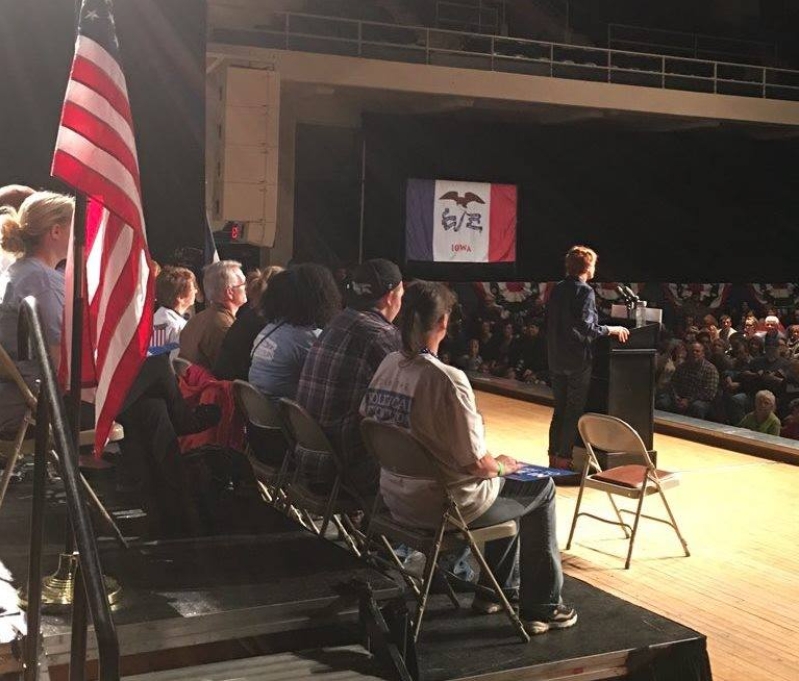
Iowa-based, highly-anticipated 2016 caucuses regarding presidential candidates will be held on Monday, Feb. 1; more people than typical are expected to have their eyes on the indicators resulting from this year's assemblies for both political parties. The caucuses are gatherings at which voters from all of 1,774 Iowa voting precincts meet to elect delegates to the county conventions. Since 1972, Iowa caucuses have been the first major electoral event in the nominating process for U.S. president.
From the county convention, of which there are 99 counties in Iowa, delegates are chosen for the state party convention.
Eventually, the state party convention elects delegates to attend the national party convention, where a presidential nominee is selected.
The winner of the Iowa caucus receives the most delegates elected to the county convention, which then elects delegates for that candidate to the state convention, and eventually, to the national convention.
Party-organized caucuses are democracy at work, and they are far from calm affairs, reminds The Dallas Morning News.
Unlike a primary, in which voters cast ballots throughout the day or even for weeks, the key to the caucuses is persuading supporters to gather en masse at a set time. They're generally held at a school or other public building, though sometimes even a home garage will do.
Republicans vote on individual ballots, and results are tabulated and announced. Then, other official state and county business begin, including electing delegates to the county convention and voting on platform plans for that convention.
This year is unique because the GOP straw poll, typically held the summer before the caucuses, was canceled because it was unclear whether enough candidates would participate. The straw poll acts as an early test of the campaigns' organization strength.
"Not having the straw poll has resulted in a situation that we don't know what the grassroots organizational support of the campaigns is," said Rachel Paine Caufield, associate director of the Harkin Institute for Public Policy and Citizen Engagement at Drake University.
The caucuses will be the first and only true test for remaining candidates.
Democrats have a more fluid process. After the rules are explained at a caucus, voters will break up into groups based on whom they back for president.
Individuals stand in different parts of the room based on whom they support, and uncommitted voters have their own group, too. The group numbers are counted. Groups must have at least 15 percent of the total number of attendees to be considered "viable."
Those in groups that aren't viable and uncommitted voters then may realign, and join another group. Groups are counted again. This process continues until all remaining groups are viable.
This year's caucuses could see a number of not-viable groups at precincts, said David Yepsen, director of the Paul Simon Public Policy Institute at Southern Illinois University.
Results typically are reported as a percentage rather than a firm vote count; it corresponds roughly to how many convention delegates will be awarded to each nominee. Like the Republicans, the Democrats then attend to other business, including electing local party leaders and discussing platform positions.
Iowa counts most for providing, or halting, the momentum of individual candidates, and reducing the field.
Iowa has been using the caucus process since the state was formed in 1846. It gained the coveted first-in-the-nation status in 1972, when the Democratic Party moved its caucus from mid-spring to early January. In 1976, the Republican Party moved its caucus to coincide with the Democrats.







